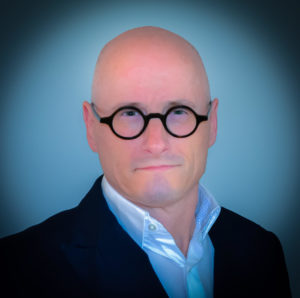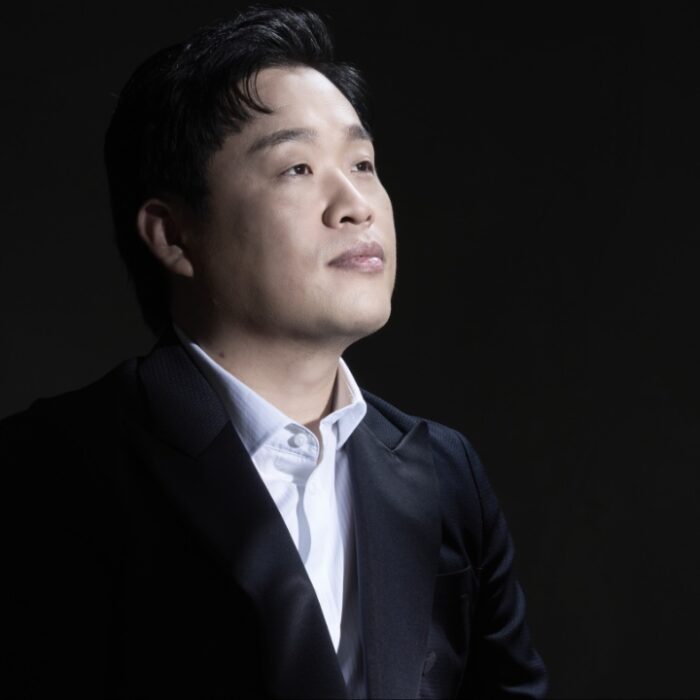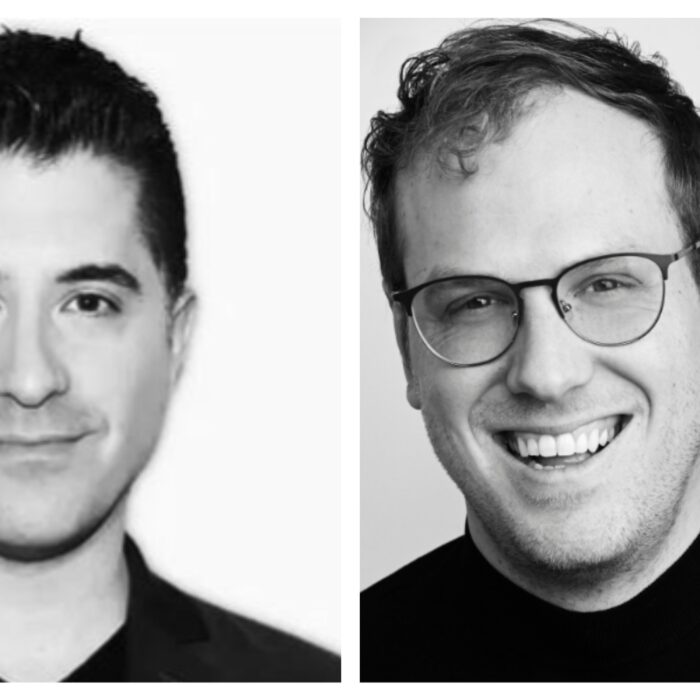
Q& A: Soprano Elly Kace on Transcending Boundaries from Opera to Experimental Pop
By Chris RuelElly Kace was in Italy as the pandemic began ripping through the country’s population. She was there to improve her craft as a classical vocalist, taking lessons, and the beauty of her surroundings. When things became dire, she had to leave. People were dying in horrific numbers and lockdowns were closing nations’ borders. Her social media posts’ emotional honesty revealed her fear and uncertainty. Like everyone, she didn’t know how it would all turn out, personally and globally.
When Kace returned from Italy to Brooklyn, New York, she spent her days in a small apartment, posting nightly communal music making — the banging of pots and pans that reassured everyone was—as the catch phrase said, alone together.
Soon, Kace began delivering online yoga classes, using movement and form instead of her voice to connect with others. Yet, music ran in her blood as much as her yoga practice. Denied the opportunity to perform for a live audience, she wrote songs for herself. These were never meant to be shared, yet slowly they began to make their way into her social feed. She learned how to use Logic to record and mix a very different style of music and voice. Gone were the soprano operatic acrobatics. Kace was making pop music in the style of Björk with a touch of Radiohead and a dash of meditative chanting.
The soprano already had two classical recordings under her belt. Her debut album, “Untethered,” featured composer Valerie Saalbach’s song cycles. Next came “Formless,” which presented Dvořák’s ‘Biblical Songs.’
Kace’s third was nothing like the first two. “NISMA (Nothing I See Means Anything),” Kace’s first crossover album celebrates not knowing all the answers and is infused with her passion for yoga and meditation. Her fourth “Satyam” features her performing chants and a virtual sound bath using Tibetan singing bowls. “Object Permanence” picks up the sound of both—the layered vocals and ethereal quality—while introducing more live instruments.
Her latest track, “Lament,” sees Kace return to the classical repertoire, covering Purcell’s “When I am Laid in Earth,” a.k.a, “Dido’s Lament.” Upfront, the song has Trent Reznor (Nine Inch Nails) written all over it — gears seemingly grind, there are weird sounds that are simultaneously organic and mechanistic, and Kace vocalizes the tune’s famous bass line just at the edge of hearing. The listener is then hit with Purcell’s tune except it doesn’t sound centuries old; rather it’s so evocative and visceral with its live strings and haunting vocals that it could easily fit a devastating cinematic moment.
OperaWire spoke with Kace about her progression from classical soprano to experimental pop artist where one thing remains constant: connecting with the self and with others through music.
OperaWire: What happened? How did you go from singing leading soprano roles to creating an album like “NISMA” or “Object Permanence?”
Elly Kace: The catalyst, if I had to identify it, was my meditation practice, which involved learning to sit and be a body that was breathing without any expectations. For 15 to 20 years, I was eating, sleeping, breathing, and bleeding opera. During lockdown, I couldn’t hide or put on a mask. I had a massive mental breakdown one week because I felt a part of me dying – the part that could only see opera. That was scary because it was an admission that I was willing, on some level, to start from zero somewhere else. I thought, ‘I’m going to try to be bad at everything.’
Being a baby and being vulnerable with people, saying, ‘I don’t know what I’m doing. I would love to learn from you,’ has also led me to this idea of community building. Music, opera or otherwise, has always been about a community coming together to feel together.
I haven’t let go of opera or classical singing. I’m still in love with it. Every time I’ve taken a classical gig, it inspires the things I’m curious about writing. I see them as the same. It’s all becoming just this expression of vibration from day to day that’s moving through me, and I see it as my job to listen to where I can be of the most service next.
OW: How do you relate to artists like well-known opera buff Freddie Mercury or less well-known opera-influenced Rivers Cuomo of Weezer, who immersed himself in “Aida” and “Madama Butterfly” while writing music for the band’s second album “Pinkerton”?
EK: I was aware of Freddie Mercury, but I didn’t know about Weezer. One of the artists that inspired me when I was starting was Bobby McFerrin. I was in the Chicago Children’s Choir, now called United Voices, and he came to do a workshop with us and conducted us in Vivaldi’s “Gloria.”
He told us his story about how he had this impulse to lock himself in a room and not listen to music for two years to decide what music was to him. And that kept ringing when I was like, ‘I’m writing, I don’t know why, I’m just redefining.’
I’m building a live community element in what I’m doing, which requires a certain amount of research about bands that are like what my band is doing. And people will tell me like, ‘Oh, it reminds me of this artist who also did that.’ It’s like what you just did. And so, I’m still discovering that I fit into this other world, which is so lovely.
I am almost smacked with tremendous imposter syndrome daily, wondering what I am doing. Why am I not still practicing opera and going on that one path? Is it okay for me to be splitting myself in these two ways? Am I wasting my life? Am I wasting my time? Is anybody listening? Who do I think I am? All of that.
So, it is helpful to notice these other artists who are thinking similarly and have successfully found their people. So, thank you for telling me about that. I didn’t know that that was a thing that was a safe space to jump into. And it’s nice to know it’s there.
OW: Describe your musical journey.
EK: My entire musical journey is a journey of self-discovery. Much of my music emerges from sitting, meditating, and waiting for an impulse to arise, followed by pursuing that impulse.
However, being a human who has spent my whole life on this planet, I have heard a vast array of music in numerous different styles. I’m incredibly fortunate that my parents, while not musicians, have great taste in music. Upon returning home from swim practice, my dad prohibited TV watching, opting for record-listening parties.
Music was always playing and was invariably interesting, high-quality material. So, I grew up with my parents spinning tracks from Nine Inch Nails and Portishead, encapsulating those nineties vibes. Artists such as Tori Amos, Fiona Apple, Björk, The Cranberries, The Sundays, The Cure, and The Clash were recurrent features in our listening sessions.
It’s a part of who I am.
OW: How has your classical training influenced your crossover music?
EK: I have influences harmonically and texturally that are classical. I’ve always gravitated mostly toward romantic music and verismo for their textural qualities, which I love. I adore beautiful melodies, lush harmonies, unexpected changes, and how music can assume prismatic colors in that space.
Because of my training, I hear these aspects in other music I listen to. I’m slightly nerdy about collective consciousness and psychic development through meditation practice. We are all connected, having access to the same elements in our consciousness. So, if I’m musically tapped into that collective consciousness, I’m accessing the same things that Purcell did across space and time 400 years ago. All of that exists in that pool.
OW: Tell me about the creation and inspiration behind “Lament”?
EK: I was missing opera. I wanted to see if I could dip my toe into that space, keep an open mind, and allow things to express through me in a way that the present moment would dictate rather than adhering strictly to Purcell’s version. Connecting genuinely with Purcell, I would meditate, sit with his essence for a moment, and ponder: if Purcell were alive right now, what might be interesting about this sentiment? If he had the tools that I have, how might he express this? Then, I would return to my own perspective.
I’ve always liked that bass line; from the first time I heard it, it struck me as a stroke of divinity and brilliance. It’s the most emotive, simple, and sad thing. There’s no way to create anything similar that is as good, so we decided to do a straight-up cover and see what happened.
It took me to an epic, dark underworld and prompted an exploration of guilt, shame, and mortality. However, “mortality” seems too light because it’s not just about dying but acknowledging that we are dying every second. Every moment, we’re unknowingly causing harm, even while trying our best. Still, the fact that we are trying and care to try our best is beautiful. That human experience is impossible to describe in a word, but he [Purcell] tried to with “Lament.” It’s that kind of essence, that feeling.
OW: Why did you opt for live string instruments in “Lament”?
EK: I knew I needed real strings, so I hired a remote string recording artist to manage violin one, violin two, viola, and cello on her own.
I also brought in Isaac, an incredible jazz double bassist from my band, and said, ‘Hey, give me straight-up arco sad vibes, but also follow your instincts.’ What he sent back was perfect on the first try: ‘Okay, you’re officially the solo instrument in this.’
Purcell used space between chords and strings to convey desperation, twisting the knife in the silence. But with current sound design and granular synths, I wanted to add a kind of vocal layering reminiscent of a scene from ‘What Dreams May Come,’ where someone steps on living, stuck human heads in the underworld.
I sang all the string parts with my voice in layers, especially at the end of the track. Using an app called Borderlands, a finger-guided synth that changes which part of my vocal recording you hear at any given moment, offering divine randomness that I found attractive. Merging this with the synths and new production knowledge, I aimed to create a soundscape akin to stepping on skulls and sinking into an abyss yet infused with a tangible sense of hope.
OW: How would you characterize your crossover voice’s qualities and texture?
EK: At the very start, when I chose to record and share this, I wanted my vocal sound to be based on the song’s emotion without ties to any specific genre. My concept album made this easy since each song targeted a particular emotion, allowing for a range of vocal feelings, from raw and gentle to outright classical. Despite this, producers still told me, ‘You sound like an opera singer.’ And they were right.
Training for around 15 years to sound a particular way, now I aim to remove the masks and observe the authentic sound beneath. The vocal strength and core developed through training stay, but I’m working to shed the added layers designed to craft a classically acceptable instrument.
My chanting practice, particularly in Sanskrit, and vocal improvisation meditations became key in helping me find what my real voice wanted to do, allowing it to make any noise it wished, whether weird or enjoyable.
Discovering the most vulnerable voice, which was humming to vibrate my chest and stomach, was, at times, emotionally overwhelming. However, breathing into and accepting that sound became easier with time. This is my truest voice, intimidating in its lack of polish and control but authentic. Sharing this with my mix artist and voice teacher in New York, Neil Semer has provided accountability and a safe space to share it more actively.
OW: How has your crossover affected your classical sound?
EK: Oh my gosh, it’s opened a whole world of color because I didn’t realize how afraid I was to touch on gentleness. There’s always this pressure: make sure you’re cutting over the orchestra, vibrating efficiently, doing the right style, ensuring coaches and others see you applying their advice. These voices, from people who want the best for you, don’t leave. But all expectation comes with limitation.
In the past, I accessed what I thought was a genuine version of this musical intimacy. Now, a different intimacy and trust comes from exploring more creative space and connecting with every moment in this centuries-old medium.
Because those fleeting moments of present-moment awareness that we find together, performers and audience together, where we’re all listening to the same thing at the same time, even if it’s for a split second in one aria, that is heaven. That is heaven on earth. We need more heaven on earth because the world is pretty sick, so we need to expand those moments and find more. And that’s one of my personal goals as a human.



